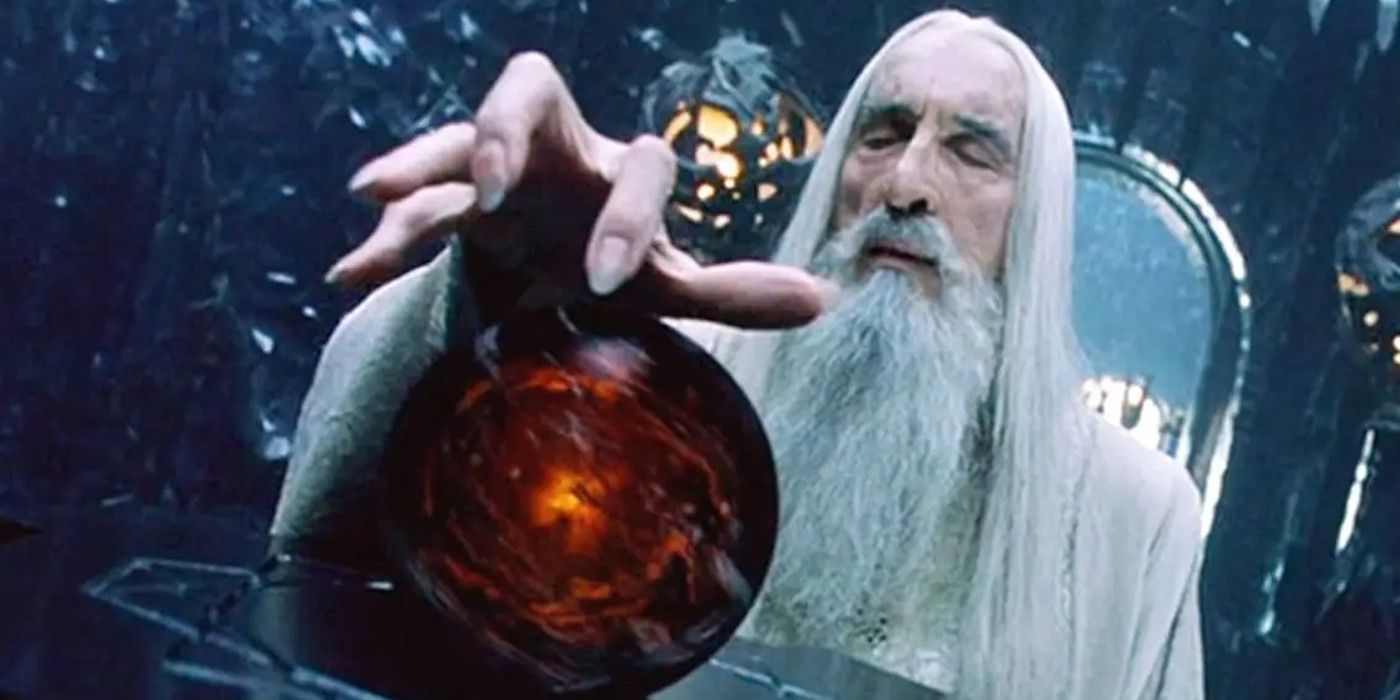Saruman’s Lord of the Rings Movie Death Explained (& Why It Was Cut)
If Saruman’s story feels incomplete in Peter Jackson’s The Lord of the Rings trilogy, that’s because the evil wizard’s final scene was controversially cut from Return of the King. In both J. R. R. Tolkien’s original The Lord of the Rings trilogy and the movie adaptation, Sauron is the main villain but, for the first two thirds of the story at least, Saruman is the Fellowship’s immediate threat. Memorably portrayed by Christopher Lee on the big screen, this version of the character is last glimpsed near the end of The Two Towers, defeated at Helm’s Deep and stranded in the Tower of Orthanc thanks to the intervention of the Ents, whose giant branches lay waste to Isengard, birthplace of the Uruk-hai. While Christopher Lee was a notorious stickler for adhering to the source material, often said to brandish a copy of Tolkien’s books on-set, Saruman’s ending is one of the biggest changes made by Peter Jackson. What’s more, the changes Jackson made to Saruman’s ending weren’t seen in the theatrical cut, making him seemingly absent from The Return of the King. I
In the original story, Saruman escapes the Tower of Orthanc by negotiating with the Ents, and the weakened wizard heads to the Shire, taking control of the area in Frodo’s absence. When the four leading Hobbits return home after destroying the Ring, they find the Shire entirely under Saruman’s dominion and are forced to expel him in the Scouring of the Shire chapters. After losing the battle, Saruman is killed by his own assistant, the downtrodden Wormtongue. The Scouring of the Shire was never likely to make it into the film version of The Lord of the Rings since it’s more or less an epilogue to the main story, and a new ending was therefore required for Christopher Lee’s Saruman. Peter Jackson filmed a scene in which Gandalf, Aragorn and the forces of Rohan confronted Saruman at Orthanc – however, the vital LotR deleted scene wasn’t in the theatrical release. Condensing the villain’s arc from the books, Saruman’s crimes are reeled off and Gandalf tries to turn his former colleague into an informant, albeit to no avail. The corrupted wizard refuses to come down from the top of his tower, so Theoden makes a last-ditch appeal to Wormtongue, which unexpectedly results in the servant turning on his master. Stabbed from behind, Saruman falls from Orthanc and lands on a spike below in a gruesome fashion.
Why Saruman’s Death Wasn’t In The LOTR Theatrical Cut
Peter Jackson opted to remove this scene from the theatrical cut of Return of the King very late in production, replacing it with a short line of dialogue in which the threat of Saruman is revealed to have subsided. Jackson’s reasons for cutting Saruman’s demise were twofold; firstly, to pare down a film that was already testing the limits of how long a person can comfortably sit on a theater seat, and secondly because of the narrative flow. Jackson claimed in a 2003 interview that the scene was originally intended for the end of The Two Towers, but removed in order to wrap up the second film faster. While the director originally thought to place the material at the start of Return of the King, this created an opening that was more about mopping up past plot threads than starting new ones and so the sequence was cut, with Jackson figuring most viewers would simply assume Saruman was defeated by the Ents.
In reality, this editing decision was received far worse than could’ve been anticipated. Christopher Lee reacted particularly badly to being cut from the final film, reportedly not attending the premiere as a result. This drove a wedge between the actor and director that was eventually healed in advance of Lee’s return in The Hobbit. Audiences were left equally unimpressed, wondering what fate befell Saruman after his defeat in The Two Towers and claiming that a villain of such stature deserved a more fitting end than a mere throwaway line. A petition was even set up requesting the wizard’s axed death scene be restored. Under pressure from viewers and a legendary actor who sings heavy metal in his spare time, Jackson conceded a mistake had been made and restored the scene in the extended version of Return of the King, finally making Saruman’s death a genuine part of the Lord of the Rings movie trilogy’s canon.
Saruman’s Death Is One Of Many Essential Scenes In The Extended Edition

There have been many versions of The Lord of the Rings. Of all the different cuts available, the Lord of the Rings extended editions offer the most additional content. All three of the movies have several hours of deleted scenes included. The difference between the theatrical and extended versions of Lord of the Rings means that, for many fans, going back to the shorter cuts simply isn’t possible. Saruman’s death is included in full in the extended editions, and once it’s seen, The Return of the King feels almost naked without it. Christopher Lee’s ire at the scene not being included in the theatrical version is entirely justified. There are many other “additions” like this in the extended editions too. Another notable example is the Mouth of Sauron character, whose plot-explaining exposition was for some reason removed from The Lord of the Rings trilogy movie theater release. Many LOTR fans swear by the extended editions as the definitive versions of the movies, and Saruman’s death is arguably the best example available to prove their point.





